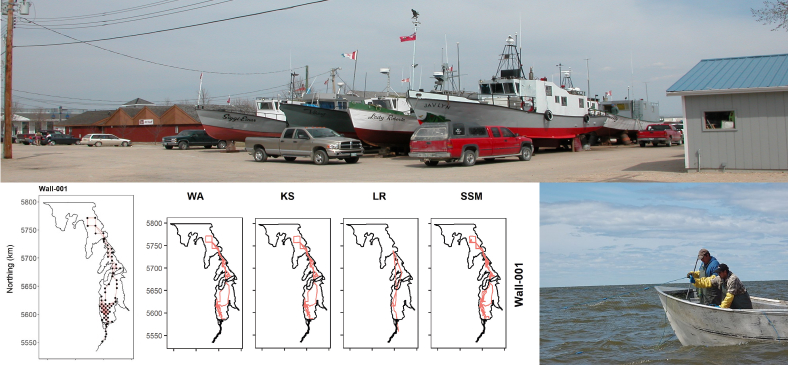Manitoba & Ontario Lakes

Fishing boats and fish movements in Lake Winnipeg. Norway House fishers hauling gillnet, Public Domain
Lake Winnipeg (Manitoba, Canada) hosts active recreational and commercial fisheries. The chief species in each is walleye (Sander vitreus), known locally as pickerel. However, sauger(Sander canadensis) and whitefish (Coregonus clupeaformis) are also managed for commercial harvest under a common individual quota. Our work on Lake Winnipeg has been limited by the lack of detailed information on fishing activities, but general patterns have been inferred from commercial landings and the number of landing records (Speers and Gillis 2012). We were also able to develop methods to discriminate among spawing aggregations from scale shape (Watkinson and Gillis 2003, 2005)Much of our work is supported through collaboration with colleagues at Fisheries and Oceans, Canada (DFO) and Manitoba Natural Resources (MNR). We have contributed to their ongoing studies of walleye through the development of Bayesian movement models (Munaweera et al. 2021) to interpret acoustic telemetry data. Our ultimate goal is to infer fish vulnerability through the relationship between their seasonal movements and fishing activities (see image above).
We have also collaborated with researchers at the Experimental Lakes Area (ELA) to examine fish movement and ecological issues important to aquaculture and conservation. We developed a novel method to correct for telemetry bias in acoustically complex, shallow lakes (Charles et al. 2016). We used related methods to examine habitat use in fish introduced by aquaculture activities (Charles et al. 2017). We also examined changing habitat quality by constructing a model to predict the impact of invasive zebra mussels on water clarity (Geisler et al. 2016). This is a key factor in walleye production and a significant concern in Manitoba.
